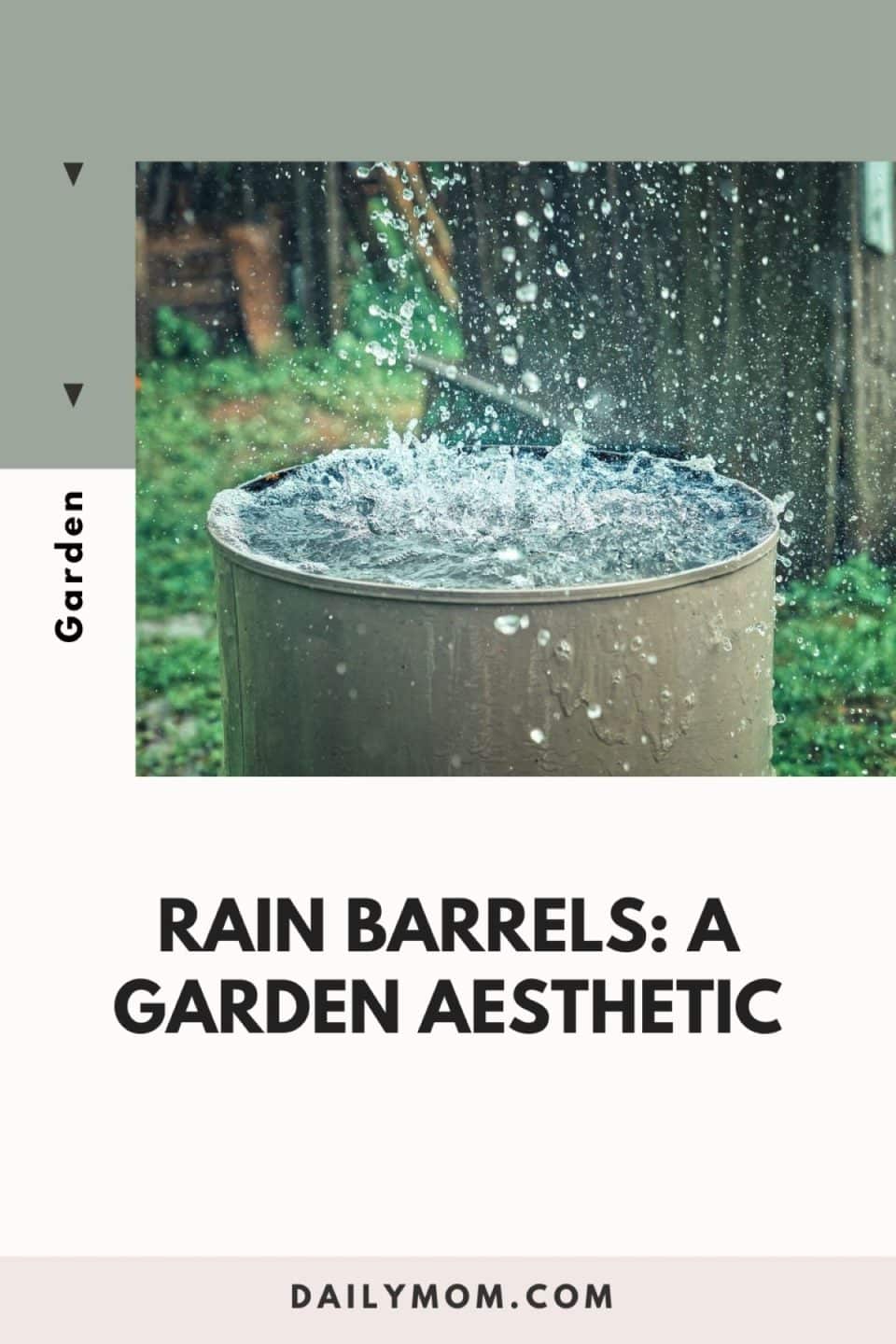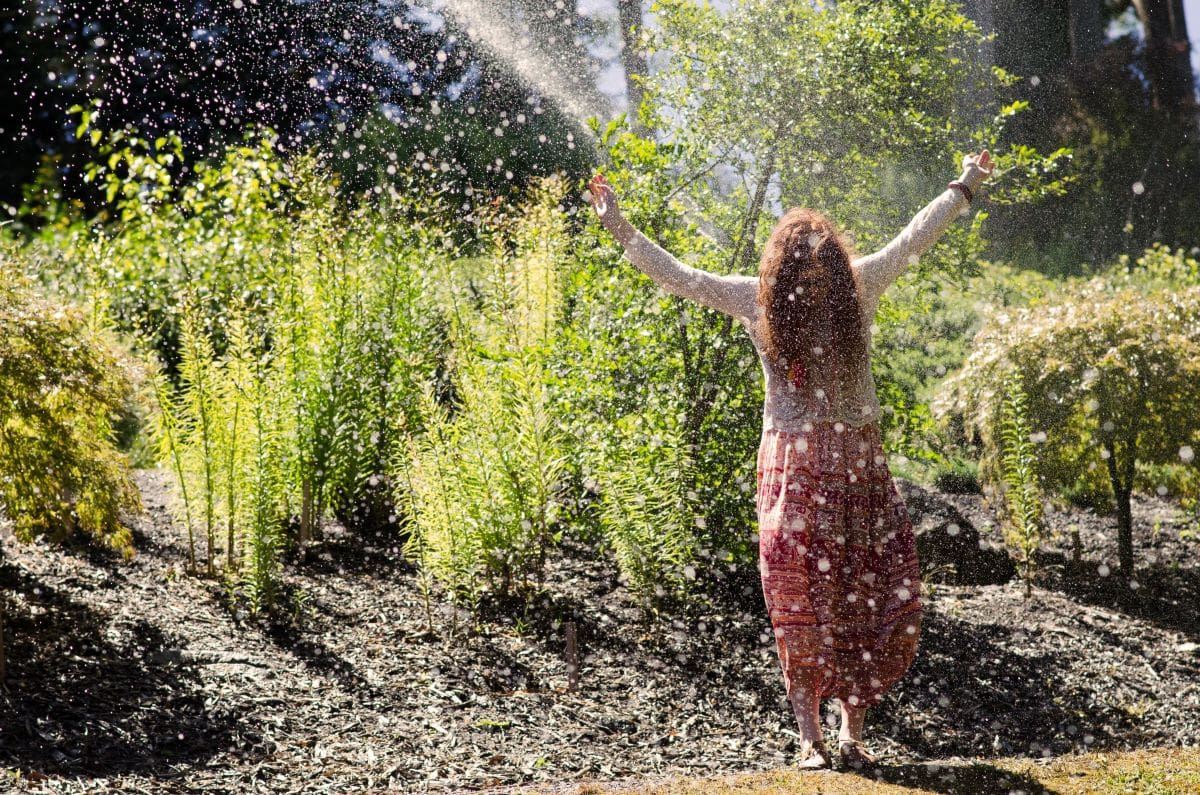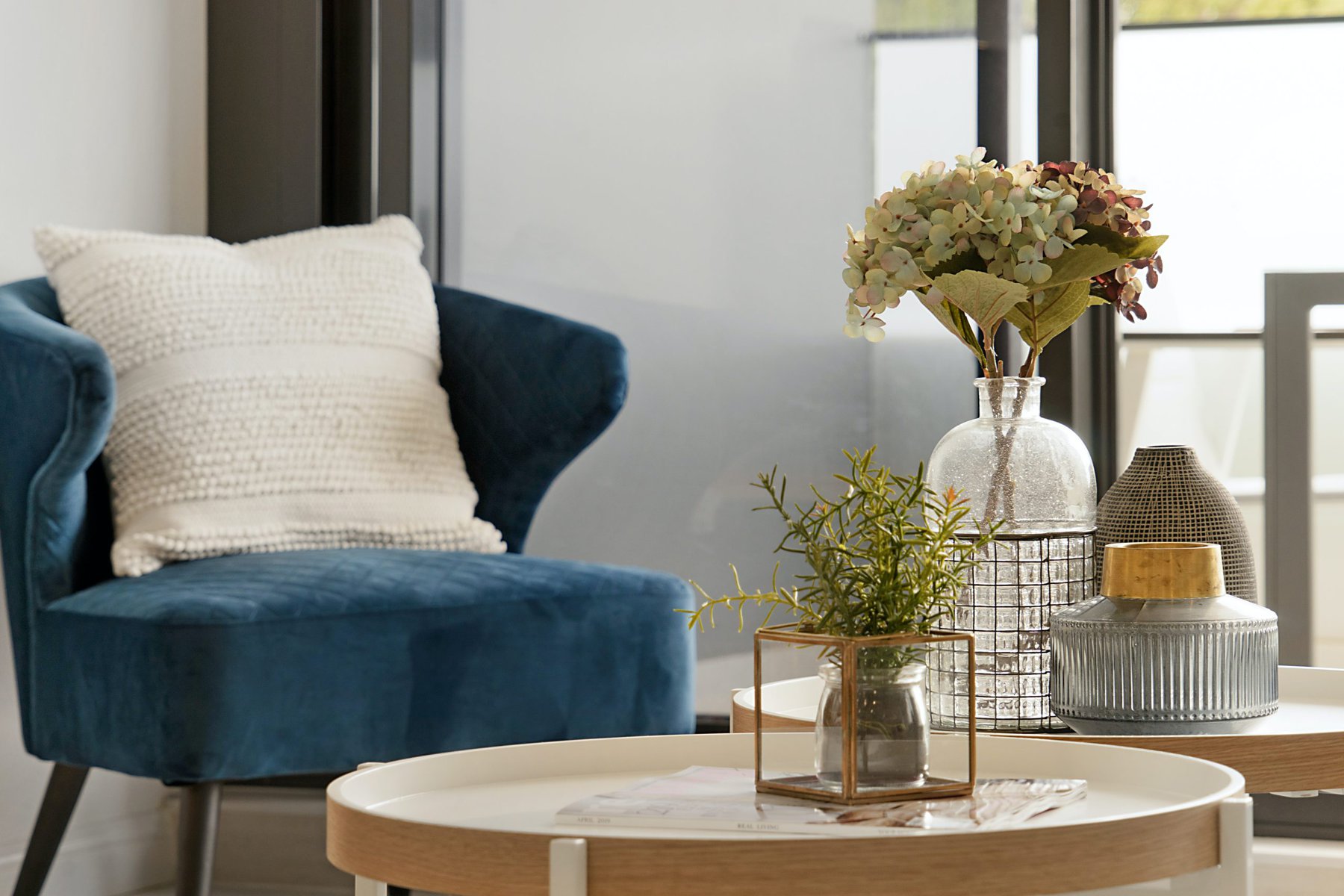Environmental consciousness is growing, and finding practical and sustainable solutions for water conservation is more crucial than ever. One such solution that combines functionality with eco-friendliness is the humble rain barrel. While it may seem like a simple addition to your home, its impact on water conservation is extraordinary.
Rain barrels have come a long way from merely functional rainwater storage containers. Today, they are as much about form as they are about function. It’s quite possible to have a beautiful garden adorned with vibrant flowers, nestled beside a gracefully designed rain irrigation system that not only conserves water but also adds to the overall aesthetics of your outdoor space. In this blog post, we’ll turn rain barrels inside-out, exploring their functional designs, decorative possibilities, and the many ways they can add character to your surroundings while positively impacting the environment.

Rain Barrel Aesthetics
Functional Rain Collection Designs
Rain barrels are no longer limited to utilitarian and unattractive containers. They’ve evolved into diverse designs that blend seamlessly with various outdoor spaces. Here are some popular styles and designs.
Classic Barrel Style
- Traditional Wooden Barrels: These barrels evoke a rustic charm and have a timeless appeal. Crafted from wooden staves, they harken back to an era when functionality and aesthetics went hand in hand. Wooden barrels are not only durable but also add a touch of nostalgia to your garden.
- Durable Plastic Alternatives: For those seeking a more modern and budget-friendly option, durable plastic rain barrels are an excellent choice. They are lightweight, resistant to corrosion, and come in various sizes and shapes, making them versatile for any outdoor space.
Slimline Rain Barrels
- Space-saving Designs for Smaller Yards: If you have limited space in your yard or garden, slimline rain barrels are designed with you in mind. Their slender profiles allow you to tuck them neatly against walls or in narrow spaces, maximizing water collection potential without sacrificing valuable space.
- Material Options and Colors: Slimline barrels are available in various materials, including resin, polyethylene, and even stone-like finishes. They also come in a variety of colors, allowing you to select one that seamlessly blends into your outdoor aesthetics.
Whether you prefer the classic allure of wooden barrels or the sleek practicality of slimline designs, rain collection has evolved to offer a choice that suits your functional and aesthetic needs.
Decorative Rain Barrel Ideas
Rain barrels present an opportunity to showcase your creativity and enhance the visual appeal of your outdoor space in addition to water conservation. Here are a few tips to help you transform your rain barrels into decorative elements that add character and charm to your garden or yard:
- Create a Mosaic Design: Mosaic tile rain barrels are a brilliant way to infuse color and artistry into your rainwater harvesting system. You can create intricate designs using ceramic tiles, glass, or even broken pottery.
- DIY Painting: Painting rain barrels offers endless creative possibilities. From solid colors to unique themes, patterns, and designs, you can go all out.
By infusing artistry and creativity into your rain barrels, you not only contribute to water conservation but also elevate the aesthetics of your outdoor space.
Rain Barrel Planters
Rain barrels can serve a dual purpose by not only collecting rainwater but also supporting plant life on top of them. This genius combination of functionality and aesthetics allows you to create another layer to your eco-friendly outdoor space. Here are some quick tips on how to incorporate plant life, select suitable plants, and seamlessly blend form and function.
Incorporating Plant Life
Rain barrel planters offer a different way to introduce greenery to spaces that might otherwise be overlooked. Some methods that are commonly used are:
- Cascading Vines: One of the most popular methods is to allow cascading vines, such as ivy or creeping fig, to grow down from the top of the rain barrel. These plants create a beautiful natural curtain that softens the appearance of the barrel.
- Container Gardening: Place potted plants directly on top of the rain barrel. Choose small ornamental plants like colorful annual flowers, herbs, or succulents. This method adds a pop of color and fragrance to your rain barrel while keeping maintenance simple.
- Built-in Planters: Some rain barrel designs come with built-in planters on top. These planters can accommodate various plant types and are specifically designed to work with rain barrel systems, ensuring efficient water usage.
Suitable Plant Types
Not all plants are suited for rain barrel planters. You’ll need to consider factors like soil depth, sunlight, and water requirements, but here are a few suggestions to get you started:
- Trailing Plants: Plants like trailing petunias, sweet potato vine, and English ivy work wonderfully for cascading down the sides of the barrel, creating an elegant and lush appearance.
- Herbs: Small herb plants like basil, rosemary, or thyme not only add a delightful aroma but also offer the convenience of fresh herbs for cooking.
- Succulents: Succulents, such as sedums or hens-and-chicks, thrive in containers and require minimal maintenance, making them an ideal choice for rain barrel planters.
- Colorful Annuals: Seasonal annuals like marigolds, petunias, or impatiens can provide bursts of color throughout the year, creating an ever-changing display.
Plant Selection and Care
- Plant Selection: When selecting plants for your rain barrel planter, consider their size and growth habit. Choose plants that won’t outgrow the space and will thrive with the limited soil depth available.
- Plant Care: Water your rain barrel planter as needed, ensuring that the plants receive sufficient moisture. Fertilize according to the specific needs of your chosen plant varieties. Regularly prune and deadhead to maintain a tidy appearance and encourage healthy growth.
Explore design ideas that seamlessly blend the practicality of rainwater harvesting with the aesthetics of plant life. From cascading flowers that spill over the sides of the barrel to creating a mini-ecosystem, you’ll find inspiration for making your rain barrel planter a beautiful and functional addition to your outdoor space.
Read More: 8 Super Backyard Garden Care Tips for Pest Prevention and Management

Rain Barrel Accessories
Enhancing the functionality and aesthetics of your rain barrel system is made easier with the addition of various accessories. In this section, we’ll explore essential rain barrel accessories that not only improve the efficiency of rainwater collection but also add a touch of innovation and style to your setup.
Downspout Diverter Systems
- How They Work: Downspout diverter systems are key to effectively channeling rainwater from your roof into your rain barrel. We’ll explain the mechanics of these systems, highlighting their role in optimizing water collection.
- Various Styles Available: Discover the different styles of downspout diverters available, including automatic diverters, manual diverters, and those that offer both functions. Each type has its benefits, and we’ll help you choose the one that suits your rainwater harvesting needs.
With the right rain barrel accessories, you can optimize your rainwater harvesting system and create a visually appealing and efficient solution for conserving water.
Read More: 10 Amazing Items To Make Your Spring Garden And Home Flourish

Creative Placement Ideas
Rain barrels are not just functional; they can also be seamlessly integrated into your outdoor spaces and landscapes, serving as both water-saving devices and attractive features. In this section, we’ll explore creative ways to place your rain barrels, making them an integral part of your outdoor environment.
Patio and Deck Integration
- Concealing Rain Barrels in Outdoor Living Spaces: You can cleverly conceal rain barrels on your patio or deck, ensuring they don’t disrupt the aesthetics of your outdoor living area. From custom enclosures to decorative screens, there are various ways to make rain barrels blend in beautifully.
- Creating Water Features: Rain barrels can also be transformed into charming water features for your patio or deck. Incorporating fountains or cascading waterfalls into your rain barrel setup adds a soothing and visually pleasing element to your outdoor space.
Garden and Landscape Integration
- Camouflaging Rain Barrels with Landscaping: From strategic placement behind bushes to using tall ornamental grasses as natural screens, you can use the layout of your yard to camouflage rain collection systems within your landscape.
- Incorporating Them into Garden Beds: Incorporating rain barrels into your garden beds or raised planters not only conserves water but also provides a convenient water source for your plants.
By creatively placing rain barrels in your outdoor spaces and landscapes, you can make them functional while enhancing the overall beauty of your surroundings.
Read More: Backyard Discovery: Get Your Yard Ready For An Awesome Summer With The Saxony XL Grill Gazebo

Upcycled Rain Barrels
Upcycling is a creative and eco-conscious approach to repurposing old containers and materials into new and valuable products. Rain barrels provide an excellent opportunity for upcycling, allowing you to transform discarded items into functional and sustainable rainwater harvesting solutions.
Selecting Your Container
- Creative Barrel Choices: Start by choosing the container you’ll repurpose into a rain barrel. Consider old wine barrels, industrial drums, or even food-grade plastic containers. Ensure that the container is clean, free of toxic residues, and suitable for holding water.
- Inspect for Structural Integrity: Before proceeding, inspect the container for structural integrity. Check for cracks, holes, or any signs of damage that could affect its functionality as a rain barrel. If the container is compromised, it’s best to find an alternative.
Preparing and Modifying Your Container
- Clean Thoroughly: Clean the selected container meticulously. Remove any residues, dirt, or contaminants. Use a mixture of water and mild detergent, and rinse it thoroughly to ensure it’s safe for rainwater collection.
- Sealing and Modifying: Depending on your container’s design, you may need to add specific components to make it suitable for rainwater harvesting:
- Overflow and Inlet: Install an overflow system to redirect excess water away from the barrel once it’s full. Create an inlet near the top to allow water from your downspout or gutter system to enter the container.
- Filter and Screen: Add a screen or filter to the inlet to prevent debris and contaminants from entering the barrel. This ensures the collected rainwater remains clean.
- Spigot or Tap: Install a spigot or tap near the bottom of the barrel to allow for easy access to the collected water. Ensure it’s securely sealed to prevent leaks.
- Secure Lid: Seal the top of the container with a secure lid or cover to prevent mosquitoes from breeding and to minimize evaporation.
Building Your Own Upcycled Rain Barrel
- Positioning: Choose a suitable location for your upcycled rain barrel. It should be close to a downspout or gutter system to capture rainwater efficiently.
- Connecting Downspout: Cut the downspout where you want to install the diverter system, ensuring it directs water into your rain barrel.
- Installing the Diverter: Install a downspout diverter system to direct rainwater from the downspout into the inlet you created on the barrel. Follow the manufacturer’s instructions for your chosen diverter system.
- Securing the Rain Barrel: Ensure your upcycled rain barrel is on a stable and level surface. Use bricks, blocks, or a purpose-built stand to elevate it if needed.
- Collecting Rainwater: With the system in place, your upcycled rain barrel is ready to collect rainwater. Monitor water levels and use the spigot or tap to access the stored water as needed.
Customization and Personalization
- Decorative Touches: To add a personal touch, consider painting or decorating your upcycled rain barrel. Use eco-friendly paints and designs that resonate with your outdoor aesthetics.
- Plant Integration: As discussed in above, consider incorporating plants on top of your upcycled rain barrel to enhance its appearance and provide additional environmental benefits.
By following these detailed steps and instructions, you can confidently repurpose old containers into functional upcycled rain barrels. Upcycled rain barrels not only help you conserve water but also showcase your commitment to sustainability and creativity.

Maintenance and Care
Ensuring the proper maintenance and care of your rain barrel system is essential to its longevity and efficiency. Neglecting maintenance can lead to clogs, contamination, and reduced functionality. Here are some valuable tips and a seasonal maintenance checklist to help keep your rain barrels clean and functioning optimally.
Tips for Keeping Rain Barrels Clean and Functioning Well
- Regular Cleaning: Regular cleaning to prevent the buildup of debris, algae, and contaminants is essential on both the interior and exterior of your rain barrel.
- Inspecting for Damage: Learn how to inspect your rain barrel for signs of wear and tear, such as cracks or leaks. Identifying issues early can prevent costly repairs or replacements.
- Ensuring Proper Sealing: Properly sealing your rain barrel is crucial to prevent mosquito breeding and water contamination.
Seasonal Maintenance Checklist
- Spring Preparation: Prepare your rain barrel system for the upcoming rainy season. This includes flushing the system, checking for winter damage, and ensuring all components are in working order.
- Summer Maintenance: Keep your rain barrels in peak condition during the active growing season. Monitoring water levels, address clogs, and prevent overflow.
- Fall Cleanup: Prepare your rain barrels for the colder months. This involves emptying and winterizing your system to prevent freezing and damage.
- Winter Storage: Properly storing your rain barrels during the winter months is essential to protect your barrels from freezing temperatures.
By following a regular maintenance routine and seasonal checklist, you can ensure that your rain barrels continue to function efficiently and effectively.
Read More: Perennial Gardens: 5 Beautiful Plants That Will Thrive Anywhere

Environmental Benefits of Rain Barrels
Rain barrels play a pivotal role in promoting sustainable living and environmental stewardship. Their impact extends beyond individual households, contributing to water conservation efforts and positively influencing local ecosystems.
How Rain Barrels Help Conserve Water and Reduce Runoff
Rain barrels collect and store rainwater that would otherwise flow into storm drains, ultimately ending up in rivers and oceans. This practice reduces the demand for municipal water supplies, conserving this precious resource. Rain barrels also help mitigate the adverse effects of stormwater runoff, which can lead to erosion, flooding, and pollution. By capturing rainwater, rain barrels slow down the flow of stormwater and filter out contaminants before they reach water bodies.
The Impact on Local Ecosystems and Water Quality
- Protecting Local Waterways: Rain barrel usage significantly reduces the volume of polluted runoff entering local rivers and streams. This helps protect aquatic ecosystems, aquatic life, and water quality.
- Mitigating Urban Heat Island Effects: Rain barrels contribute to cooling the environment by reducing the amount of heat-absorbing concrete and asphalt. This helps mitigate the urban heat island effect and creates a more comfortable and sustainable urban environment.
- Encouraging Sustainable Landscaping: The availability of stored rainwater encourages sustainable landscaping practices. Using rain barrel water for irrigation reduces the need for tap water, which may contain chemicals harmful to plants and soil.
- Enhancing Biodiversity: By reducing the impact of stormwater runoff, rain barrels indirectly support local wildlife and biodiversity. Cleaner water in local water bodies benefits aquatic ecosystems and the species that depend on them.
The use of rain barrels extends far beyond individual homes. It fosters a culture of responsible water management and environmental consciousness. By embracing rain barrels, individuals can make a positive impact on their local environment and contribute to broader conservation efforts.
Read More: Backyard Discovery: Cheap Garden Decor: Achieve Your Beautifully Unique Oasis With These 3 Tips
In a world where water conservation and environmental sustainability are paramount, rain barrels emerge as unassuming heroes. These unpretentious containers have evolved into versatile and aesthetically pleasing additions to our outdoor spaces. Beyond their functional role, rain barrels offer a unique opportunity to blend form and function, transforming your garden or yard into an eco-friendly oasis.
In the end, rain barrels exemplify the beauty of harmonizing with nature, turning a common resource into a source of inspiration, innovation, and positive change. Embrace the rain, harness its potential, and let your rain barrel become a symbol of your commitment to a greener and more sustainable world.
WANT TO READ MORE?
Check out Daily Mom’s Garden section for more tips and tricks!
CONNECT WITH DAILY MOM
💖 NEWSLETTER: DAILY READS IN YOUR INBOX 💖
Sign up to receive our picks for the best things to do, see and buy so you can relax and focus on more important tasks! Let us help you be the best version of yourself you can be!
BE SOCIAL WITH US
📌 LOVE IT? PIN IT!📌











































